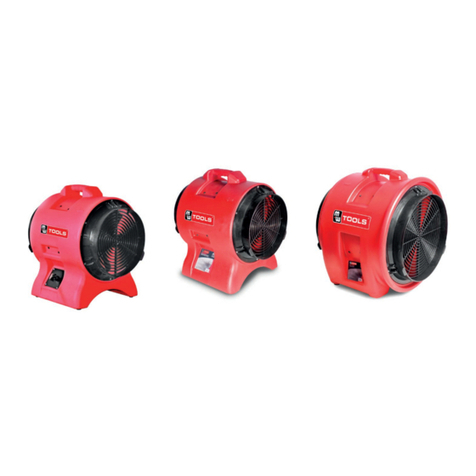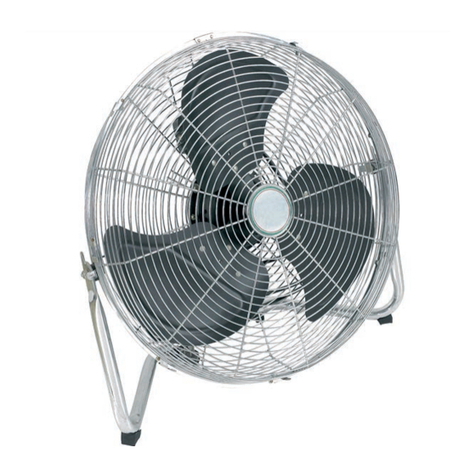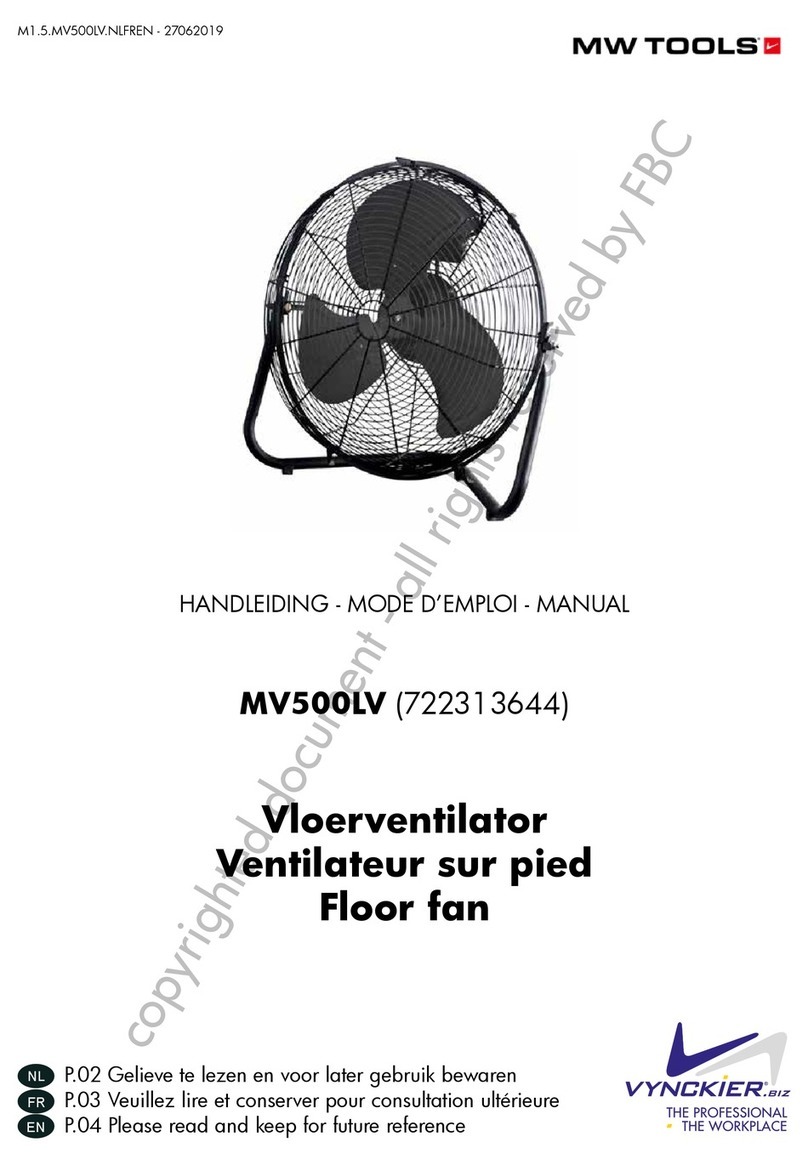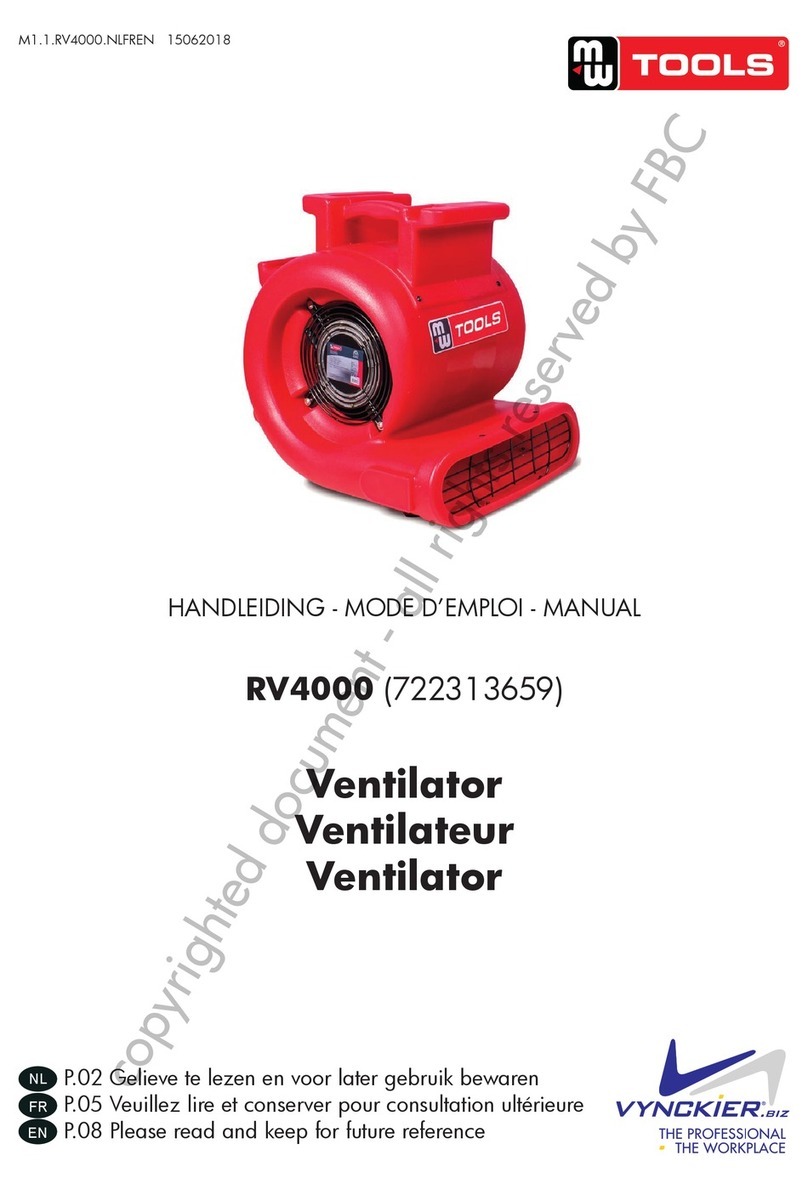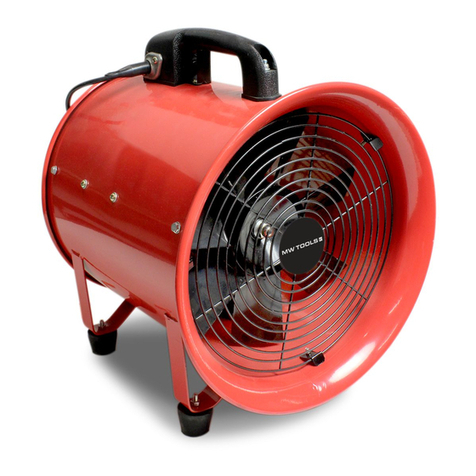
6
FR
M1.1.RV600-RV3000.NLFREN 15062018
6 Contrôle de l’humidité
Lorsque des ventilateurs sont utilisés pour augmenter l’évaporation dans un bâtiment, l’humidité de l’air augmente aussi
immédiatement. Lorsque cela arrive, le déplacement d’air est moins efcace et le séchage est ralenti. C’est pourquoi il est
indispensable que les ventilateurs soient utilisés ensemble avec sufsamment de déshumidicateurs. Pour maintenir sous
contrôle la formation de moisissures, l’humidité de l’air doit être maintenue sous 60%. Si possible, l’humidité de l’air doit
être inférieure à 45% dans les pièces. Des déshumidicateurs peuvent être installés pour cela.
An d’améliorer le séchage, la zone à sécher doit être séparée du reste du bâtiment. Réglez chauffage et climatisation
à 20-27 °C. Lorsqu’un déshumidicateur n’est pas disponible, des ventilations doivent être utilisés sous les combles,
dans les cuisines et les salles de bain pour retirer l‘humidité. Lorsque l’air extérieur est très sec, les fenêtres ou les portes
peuvent être entrouvertes.
7 Fonctionnement de l’appareil
• Raccordez l’appareil à une prise de terre.
• Mettez l’interrupteur sur marche (ON).
• Vériez le bon fonctionnement avant de laisser l’appareil sans surveillance.
• Ne déplacez pas et ne portez pas le ventilateur pendant son fonctionnement.
8 Entretien
ATTENTION !
Débranchez l’appareil avant les travaux d’entretien.
Inspection du système électrique
Vérier régulièrement si le câble électrique n’est pas endommagé. Retirez régulièrement le boîtier et vériez s’il y a des
ls dénudés, des xations desserrées et des changements de couleur sur le câblage interne. Enlevez et réparez les câbles
endommagés si nécessaire.
Nettoyage de l’arrivée d’air
Les peluches et autres saletés accumulées sur l’arrivée d’air doivent être enlevées. Retirez les peluches et poussières de la
roue du ventilateur, du moteur et des parois latérales à l’aide d’un aspirateur ou d’air comprimé.
Nettoyage du boîtier
Nettoyez le boîtier avec un nettoyant doux et de l‘eau. Restaurez l’éclat original avec un nettoyant au vinyle et du produit
lustrant, par exemple pour plastique automobile.
Vérication des côtés extérieurs
Vérier les composants extérieurs et faire attention à ce qu’ils soient installés correctement. Faites attention aux bruits
inhabituels.
Le moteur et le câblage doivent rester secs
An que les composants électriques ne soient pas endommagés, le ventilateur ne peut pas être nettoyé au tuyau
d’arrosage ou avec un appareil de nettoyage sous pression. Lorsque des composants électriques sont néanmoins
humides, ils doivent être séchés immédiatement.
copyrighted document - all rights reserved by FBC






